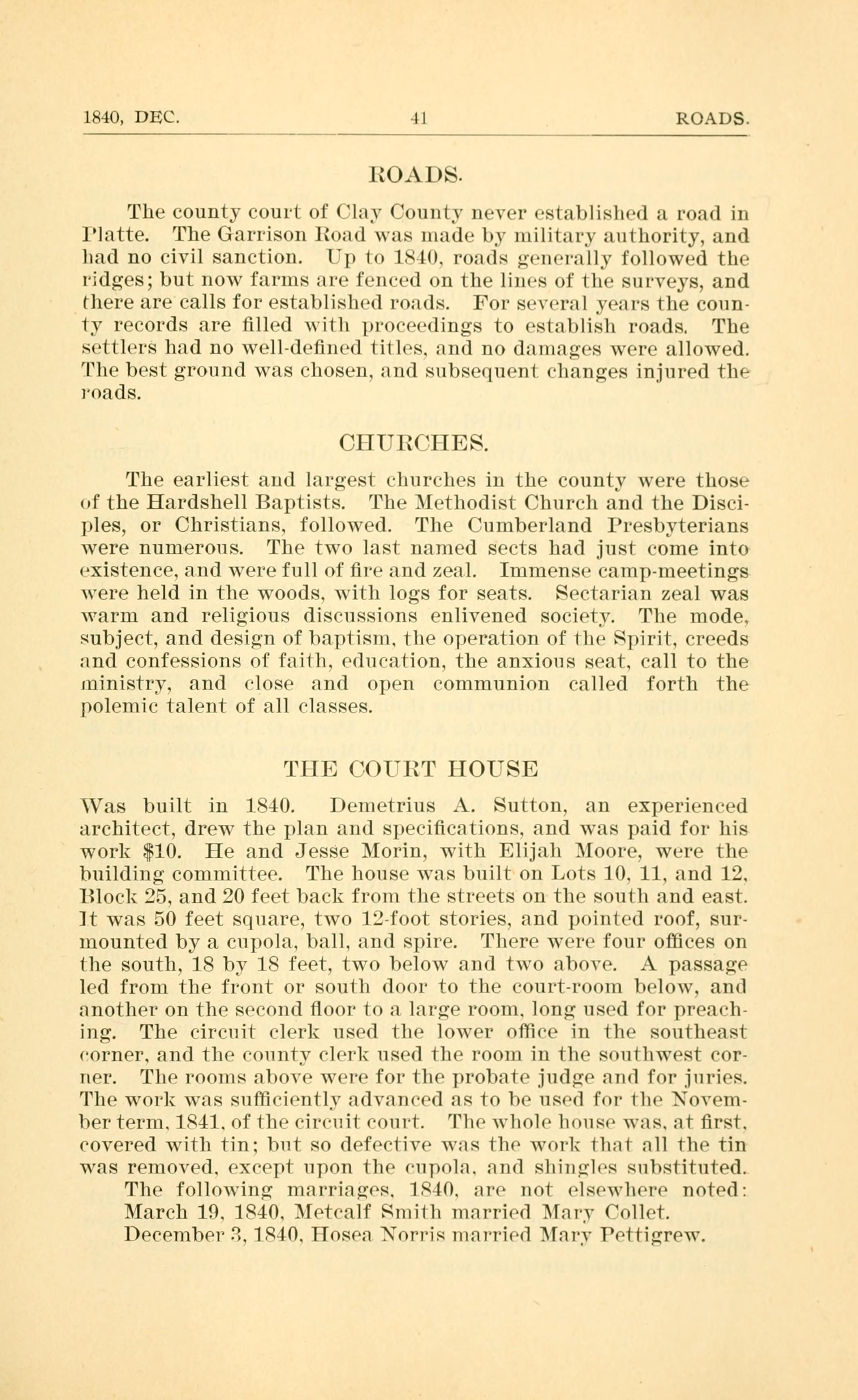Annals of Platte County, Missouri - Paxton
[previous page] [next page]

[previous page] [next page]
1840, DEC. 4 ROADS. ROADS. The county court of Clay County never established a road in 1latte. The Garrison Road was made by military authority, and had no civil sanction. Up to 1.940, roads generallv followed the ridges; but now farms are fenced on the lines of the surveys, and there are calls for established roads. For several years the coun- ty records are lled with proceedings to establish roads. The settlers had no well-dened titles, and no damages were allowed. The best ground was chosen, and subsequent changes injured the roads. CHURCHES. The earliest and largest churches iii the county were those of the Hardshell Baptists. The Methodist Church and the Disci- ples, or Christians, followed. The Cumberland Presbyterians were numerous. The two last named sects had just come into existence, and were full of re and zeal. Immense camp-meetings were held in the woods, with logs for seats. Sectarian zeal was warm and religious discussions enlivened society. The mode. subject, and design of baptism. the operation of the Spirit, creeds and confessions of faith, education, the anxious seat, call to the ministry, and close and open communion called forth the polemic talent of all classes. THE COURT HOUSE Vas built in 1840. Demetrius A. Sutton, an experienced architect, drew the plan and specications. and was paid for his work $10. He and Jesse Morin, with Elijah Moore, were the building committee. The house was built on Lots 10. 11, and 12. Block 25, and 20 feet back from the streets on the south and east. ]t was 50 feet square, two 12-foot stories, and pointed roof, sur- mounted by a cupola. ball, and spire. There were four offices on the south, 18 by 18 feet, two below and two above. A passage led from the front or south door to the court-room below, and another on the second oor to a large room. long used for preach- ing. The circuit clerk used the lower office in the southeast corner, and the county clerk used the room in the southwest cor- ner. The rooms above were for the probate judge and for juries. The work was suicientlv advanced as to be used for the Novem- her term. 1841, of the circuit court. The whole house was. at rst. covered with tin; but so defective was the work that all the tin was removed, except upon the cupola. and shingles substituted. The following marriages, 1.940, are not elsewhere noted: March 19. 1840, Metcalf Smith married Mary Collet. December 2, R40, Hosea Norris married Mai-v Pettigrew.